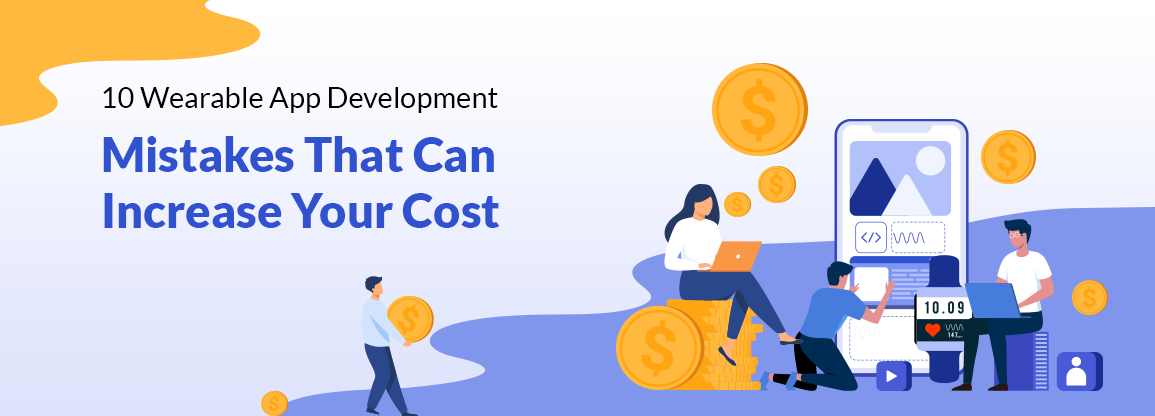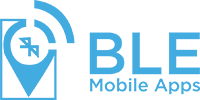What are the Factors Affecting the Cost of Wearable Apps?
- by BLE Mobile Apps

Behind all the wearable gadgets that take the limelight, wearable application development fuels their popularity and attention. Wearable device app development plays a vital role in helping brands to establish connections with their users. It can also analyze vast volumes of data pushed by wearable sensors with every user movement.
Today’s technology holds many potentials to alter the way we experience entertainment, work, and operations. So, investing in wearable technology can leverage your future in the tech world and, most notably, the connectivity offered by wearable apps. The wearable apps technology revenue is expected to reach US$17,834m in 2021, as mentioned by Statista.
Types of Wearable Apps and Platforms
Wearable apps are pretty predominant in many sectors like health care, fitness, travel, retail, finance, business, entertainment, and more. They come in various designs, and there are several platforms available for developing various wearable applications. So the cost factor is also based on platforms such as Android wearables, iOS wearables, and others.
1. Smartwatches – they are the best companions for smartphone applications since inception. But the recent advancements are bringing in standalone smartwatches too. The Android watch app development and iOS watch app development are highly sought after by the users.
2. Activity & Fitness Wearables – wearable devices like fitness trackers are most coveted by health-conscious consumerism. They offer real-time wearable health monitoring and tracking, status updates, and event reminders. They also are considered a style statement due to their attractive design. They are designed to meet the purpose of smartphones, making them handier to use. Some of them are Garmin, Fit bit and Samsung Gear Fit
3. Smart Glasses are one step above the VR headsets, although not that immersive, and they add an information display layer at the top of the user’s vision. Their application is widely prevalent in industrial and technical responsibilities. E.g., Epson Moverio, Sony Smart Eyeglass
4. VR headsets are well-known as the most immersive wearable devices in today’s tech world. It is designed to provide a combination of a real and virtual interpretation of the world to its users. E.g., Oculus Rift, HTC Vive, Google Daydream View
There are also Smart clothing, Smart jewelry, head-mounted displays, implantables, and many more.
More than knowing what the essential things are for the mobile app launch, an insight into the factors that can spoil your wearable device’s chance to succeed must be considered. Here are some of the factors that affect the cost of developing the best wearable apps.
Factors Affecting the Wearable App Development Cost
The wearable app development cost depends on several aspects. For any specific wearable app development, the cost estimate varies based on the app features, app development process, the technology stack used at different levels, working hours, and delivery period. Other than that, here are some other factors that influence the wearable app development cost.
1. User Research – Two things you need to think about – who will be your users? Who uses wearable health technology? It clears a lot of unnecessary glitches along the way of your development process.
2. App Design – this is the most crucial element for wearable device app development. A usual Wearable design will include watch faces, notifications, voice commands, and native apps. The complexity of building UI and its integration with front and backend for wearable is different from those of web and mobile applications. Notifications offer the lightweight experience of displaying contextual data that is useful from the app launch. Watch face, wear apps, and voice commands are some of the design features.
Also, it must have minimal UI/UX, and interactions should be lightweight, quick look design, offline usage, among others.
3. Wearable Apps Development – Android wearable vary in terms of design and functionality as the interactions will be fewer, utilizes watch-based APIs, features of a smartwatch, and access to standard Android APIs. iOS wearables have their own set of ins and outs. It raises the cost of development. It differs for standalone expansion as apple has enabled this feature recently.
4. App Testing – the testing and app maintenance costs are on the higher end when compared to mobile applications. It is because of:
- Data syncing among a smartphone application and their linked wearable app.
- Testing level complexities
- The difference in screen size
- The primary device’s battery life is crucial when testing a wearable application.
- Testing at different instances, such as when the primary device is turned off, is to find out loss of data occurrences
- Only a few emulators are available, which automatically surges the cost
These factors are responsible for cumulatively adding up the development cost of your wearable app.
Wearable app development mistakes to avoid.
Even though we may find that all ideas and features are best to be included in our wearable app, we sometimes forget what is happening at the backend. Here are some of the best wearable app development mistakes to refrain from that can further save expenses.

- Applying intelligence for Sensors & Devices – Connected intelligence is the future of wearable devices, and it is more than merely connecting, sensing, and reporting. The smart wearable device must be able to process the data by itself and carry out the activities. Therefore, before investing in wearable app development services, ensure that the intelligent node is being built and can become a full-fledged computing ecosystem. It is best not to limit your app idea to the device and sensor level; it will be a costly wearable app mistake.
- Use Case should align With the Wearable Device – Before initiating any wearable device app development, it is ideal for creating a table with devices and using cases. It gives a clear idea of how valuable their solution is. Framing a set of questions that cover both functionally and user’s perspectives can help decide the best fit. So, going by the current in-demand or popular device without validating the device’s purpose could lead to a wearable app development mistake.
- Too many Features – It is suitable for the Android or iOS wearables to be feature-filled to compete in today’s market. It is not advisable to stuff in so many features, due to two main reasons. Firstly, there is only limited space available on a wearable device. So, adding too much information or functionality can result in users abandoning your application for a while or altogether. Secondly, the battery life of a wearable device is not as long-lasting as in a smartphone. So, loading it with a lot of feature sets can bring down the battery life.
- Keeping Launch Date before In-Depth Testing – A grave mistake is to rush wearable app developers to launch the app without proper testing. Many bugs pop up during the testing phase that tells about your app’s effectiveness. You can ensure all the aspects are seamless between the wearable device and your mobile application before your users make use of it.
- Overinvesting In Hardware Early On – It is best not to invest or build your whole infrastructure based on hardware that could become obsolete sooner. So, it is best to develop your wearable app based on its intent.
- Test the Market Before You Spend – It is essential to analyze the market in-depth before finalizing and building the features. A deep understanding of the market competition can save a great deal of your investment.
- Security And Privacy Aspects – Wearable devices gaining mass adoption are mainly related to health-monitoring apps. So, be sure to seriously note security and privacy issues as the user/patient health-related data is sensitive and should be kept confidential compared to generic personally identifiable information. Double-check the security and privacy impact assessments during the development phase.
- Requiring Too Much User Input – The fewer time users spend on app interaction, the more convenient it will be. Wearable devices’ main advantage is the automating systems that shun user physical interaction as much as possible.
- Complicated UI And Functionality – People don’t prefer doing complicated tasks. It is best to be mindful of the screen size, as the wearable screens are tiny, and make sure it is simple and easy to read.
- Visual Aesthetics – The overall look and feel of your app add value to your customers. People love to purchase products that make them feel good about themselves.
Final Thoughts
As wearable technology is gaining momentum in today’s world, more companies are pondering about creating wearable apps to extend their service reach. A significant portion of fitness wearables has moved towards smartwatches, wearable health devices, and a wide variety of collaborations. Thus, being prepared to update and expand can drastically cut off some slack.
Nevertheless, it’s essential to understand that the best wearable apps need unique design and functionality. We excel in wearable technology and offer innovative solutions for our clients. We have a skilled in-house team that can help you develop wearable apps or re-engineer your existing mobile applications compatible with wearable devices.
Get all the necessary details on point and avoid such costly mistakes with our wearable app development services. Reach out to our experts by dropping an email to contact@blemobileapps.com
